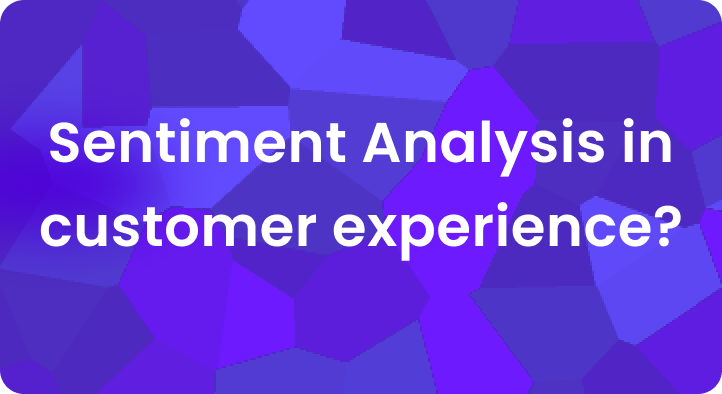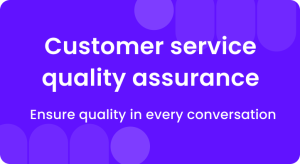Let’s face it – your agents are spending way too much time on stuff that’s pretty boring.
You know like, copying information between systems, updating customer records, or writing the same follow-up emails over and over.
Research shows that around 40% of employees’ time is lost on such manual tasks.
That’s a huge drain on productivity and morale. What if those boring bits could handle themselves?
This is where Robotic Process Automation (RPA) comes in.RPA uses software “bots” to automate those mundane chores in the background.
In a call center, RPA can take over everything from data entry to generating call summaries.
It helps you free your human agents to focus on the conversations that matter.
In this article, we’re going to break down what RPA really is, how it works in call centers.
And most importantly, how it can turn your call center into a lean, mean, customer-satisfying machine.
A. What is RPA in call centers?
Robotic Process Automation (RPA) in a call center means using software bots (not physical robots) to automate repetitive tasks that agents usually perform on their computers.
Think of these bots as a digital workforce handling the drudge work.
RPA bots can log into applications, copy and paste data, fill out forms, and follow rule-based workflows – just like a human would, but faster and without fatigue.
By delegating tedious manual tasks (data entry, order processing, ticket updates, etc.) to RPA, contact centers streamline their workflows and free up agents for more complex customer-focused work.
Importantly, RPA bots are software programs, not humanoid robots.
They don’t speak to customers directly (unless combined with AI chatbots), but they handle behind-the-scenes tasks.
For example, an RPA bot could automatically log a call outcome in the CRM or send a follow-up email, without the agent having to do it manually. RPA can even assist with quality assurance (QA) in call centers.
Instead of relying solely on managers to monitor calls, an RPA-driven system (often enhanced with AI) can automatically score calls and flag issues for every interaction
B. How RPA works
So, how does RPA actually work without deep technical integration?
Think of RPA as a super-efficient assistant that watches how agents do their tasks. It’s clicking buttons, filling forms, navigating screens and then learning to do those steps itself.
Here’s how it works:
- Mimics human actions: RPA bots replicate exactly what a human would do on a computer – typing, clicking, copying data between apps.
- Learns by example: Developers or the bots themselves record workflows by example, like filling a form or extracting data.
- Executes faster and error-free: Bots work 24/7 without fatigue or mistakes, speeding up processes and improving accuracy.
- No deep integration needed: Unlike traditional automation, RPA works on top of existing systems without needing complex coding or changes to backend software
C. Top 7 use cases for RPA in call centers
In a call center, RPA shines in many areas.
From automating quality checks to updating customer records and even generating call summaries, the possibilities are broad.
The goal is always the same: offload repetitive, time-consuming chores so agents can focus on customers.
Let’s explore seven high-impact RPA use cases for contact centers and how they help streamline operations:
1. Automated quality assurance (QA)
Quality monitoring is vital, but traditionally labor-intensive.
With RPA, you can automatically review and score calls for quality and compliance.
Instead of managers manually auditing only ~2% of calls, an RPA-driven QA system can monitor 100% of interactions.
These bots can detect if a mandatory disclaimer wasn’t said or if the agent’s tone was negative, and then alert supervisors instantly.
Automated QA ensures no call falls through the cracks, improving compliance and giving agents faster feedback for coaching.
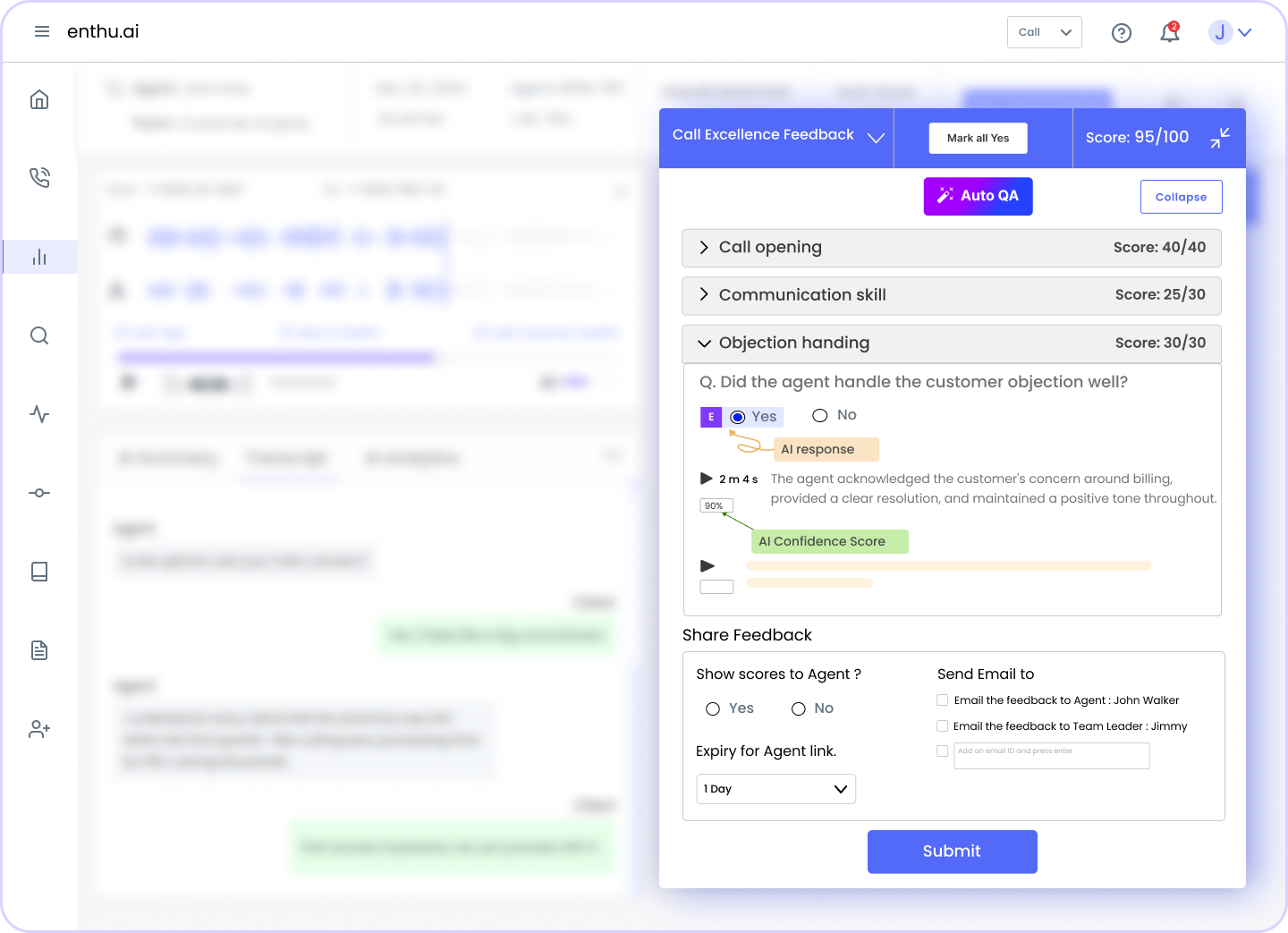
2. CRM updates and data entry
Call center agents often need to update multiple systems (CRM, billing, ticketing) during and after calls.
This copy-paste work is tedious and prone to errors.
An RPA bot can pull up customer data from various systems and update records automatically.
For instance, when a call ends, the bot could log the call result in the CRM, update the billing address in a finance system, and create a support ticket summary – all in seconds.
Bots can handle the swivel-chair tasks like launching apps, copying fields, and pasting info across forms.
The result: agents spend less time typing and more time talking, and the data is consistent everywhere (with far fewer typos!).
3. Follow-up triggers and actions
After a customer interaction, there are often follow-up tasks. RPA can ensure these happen automatically.
For example, if a customer requests a callback next week or a follow-up email with more info, a bot can schedule that event or draft the email without an agent’s intervention.
RPA can also trigger internal workflows based on call outcomes.
Let’s say during a call, an agent marks the customer as interested in an upgrade – a bot could immediately notify the sales team or set a task in the CRM.
Similarly, if an issue needs escalation, the bot can alert a manager. This guarantees no follow-up is forgotten.
4. Customer verification and data retrieval
Verifying a customer’s identity and gathering their information is how many calls begin.
RPA can speed this up tremendously.
Instead of making the caller wait while an agent clicks through multiple databases, an attended RPA bot (one that runs on the agent’s desktop) can instantly fetch and compile customer info from various systems.
For instance, when a call comes in, the bot can use the caller’s number or account ID to pull up their profile, recent orders, open tickets, etc., before the agent even says “Hello.”
This reduces handle time and improves first-call resolution.
In fact, using RPA to integrate customer data across systems can cut down identification time so much that it shaves minutes off the average call duration.
5. Compliance monitoring and triggers
Compliance is a big deal in contact centers (think: mandatory disclosures, payment authorization steps, data privacy rules).
RPA can act as your tireless compliance assistant.
It can monitor processes or calls for compliance checkpoints and trigger alerts or actions as needed.
An RPA bot might listen (via speech-to-text) for a credit card number being read aloud and ensure that a section of the call is masked in the transcript for PCI compliance. Or, if an agent skips a required verification question, the bot can pop up a reminder or notify a supervisor.
Automated QA can instantly flag missing consent statements or unauthorized claims on 100% of calls, instead of hoping a manager catches it later.
This proactive approach reduces legal and regulatory risks – issues are caught before they become fines or serious problems.
6. Ticket prioritization and routing
Call centers often double as contact centers, handling emails, chats, and support tickets in addition to calls.
RPA can intelligently sort and prioritize these incoming requests.
For instance, imagine hundreds of support emails pouring in daily, an RPA bot can scan the subject or content for keywords and urgency.
It might categorize some as high priority (e.g., a message that says “service down” or “angry customer”) and automatically route those to Tier 2 support, while low-priority ones (like a routine billing query) are placed in a standard queue.
Similarly, new helpdesk tickets can be tagged by issue type by a bot, ensuring they go to the right department.
The benefit is faster response times and workload balancing, urgent issues don’t languish in a generic inbox, and agents can focus on the most important tasks first.
7. Post-call wrap-up and summaries
Ask any agent and they’ll tell you: after-call work (ACW) can eat up a lot of time.
Writing call summaries or case notes might only take a few minutes per call, but across hundreds of calls, it adds significantly to Average Handle Time (AHT) and agent workload.
RPA can come to the rescue by automatically generating call wrap-up summaries.
Using speech-to-text transcription and text analysis, an RPA system can produce a brief summary of the conversation as soon as the call ends.
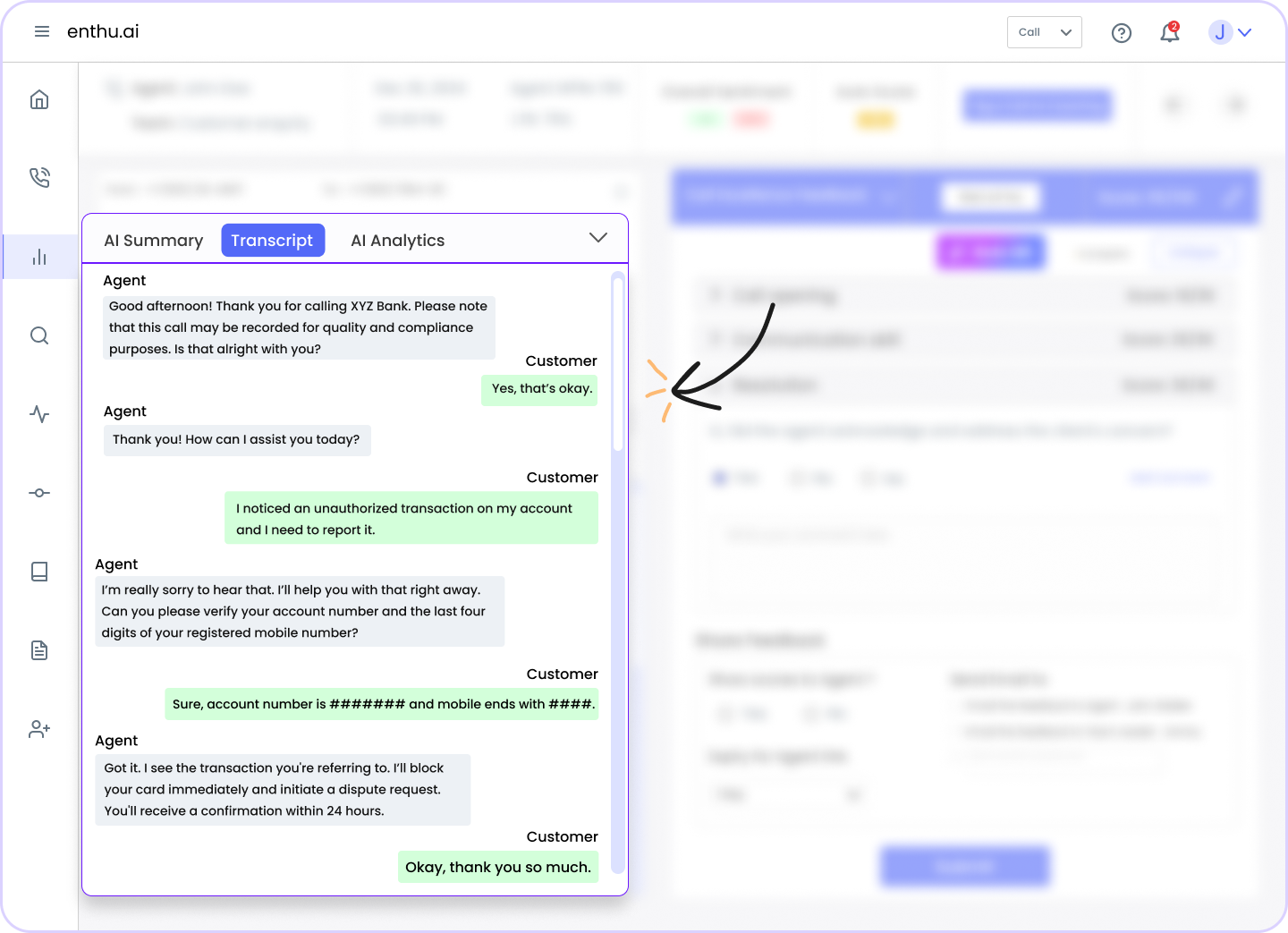
For example, it might list the key issue, what resolution was offered, and any next steps, then log this in the CRM or ticket. Since agents aren’t busy typing up notes, they can move on to the next call more quickly, effectively cutting down AHT.
This not only boosts productivity but also ensures consistency in documentation (every call has notes, and they’re structured in a standard way).
| Use Case | Description | Benefit |
| Auto QA | Automates quality checks for script adherence and call duration. | Ensures compliance without manual effort. |
| CRM Updates | Automatically updates customer records in the CRM. | Saves time, reduces errors. |
| Follow-up Emails/Tickets | Triggers emails or tickets for follow-up actions. | Prevents missed follow-ups. |
| Customer Verification | Verifies customer identity before connecting to an agent. | Speeds up call handling. |
| Compliance Monitoring | Pauses recordings for sensitive data to ensure compliance. | Reduces compliance risks. |
| Ticket Prioritization | Prioritizes tickets based on keywords or urgency. | Improves response times. |
| Wrap-up Summaries | Generates call summaries automatically. | Saves time, enhances accuracy. |
D. How RPA saves time & money
Let’s talk numbers.
RPA has proven to be a game-changer in improving efficiency, accuracy, and employee satisfaction.
Let’s break down some of the key benefits with facts and figures:
1. Agents reclaim wasted time
Around 40% of an employee’s working time is eaten up by manual, repetitive tasks.
In call centers, this might include searching for information, doing after-call paperwork, or updating multiple systems.
RPA gives those hours back.
Also, the average employee could get back 60 hours per month by automating repetitive tasks easily.
2. Faster handling and lower AHT
RPA can dramatically reduce Average Handle Time (AHT) by speeding up call-related processes.
When routine portions of a call (like verification, data entry, or wrap-up) are automated, calls naturally shorten without rushing the customer.
For example, automating call summaries alone cuts out the minutes agents spend writing notes.
Faster calls mean customers get solutions sooner and agents can handle more contacts in the same amount of time.
3. Increased throughput without errors
A single RPA bot can perform tasks much faster than a human and do so 24/7.
This effectively increases your throughput (work completed) without adding headcount.
For instance, if one bot can handle certain transactions 20x faster than an agent, you either resolve issues quicker or you can scale up volume dramatically during peak times by running more bot instances.
This saves money (each error can cost time/money to correct) and improves customer satisfaction since things are done right the first time.
4. 100% task coverage and compliance
Humans have limits on how much they can monitor or check.
RPA has no such limitation. It can analyze every single call or every single ticket if needed.
For quality and compliance, this is a game-changer.
Traditional QA might check a tiny sample of interactions (often 2-5%).
In contrast, call center automation allows 100% monitoring, meaning every interaction is evaluated for quality, and every compliance box is checked.
This comprehensive coverage reduces risk (for example, catching all compliance slip-ups) and improves overall service quality because you have complete data, not just samples.
5. Major cost savings and ROI
Perhaps most compelling, RPA is a cost-saving tech for call centers.
By taking over labor-intensive work, it directly cuts labor costs or allows your team to handle more volume without proportional cost increase.
Various studies have quantified this.
Deloitte found that companies implementing RPA see a 30–50% reduction in operational costs on average, often achieving payback in under 12 months.
Gartner reported immediate labor cost savings of 25–40% from RPA in many cases.
That’s because bots are typically cheaper than adding full-time staff for the same workload.
The table below highlights a few concrete before-and-after scenarios to visualize the impact:
| Key Metric | Without Automation | With RPA Automation |
| Calls QA-Reviewed for Quality | ~2–3% of calls sampled | 100% of calls scored and checked |
| After-Call Wrap-Up Time (Notes & Summary) | 2–3 minutes per call (agent-written) | ~0 minutes (auto-generated summary) |
| Data Entry Error Rate | Typos and mistakes common (human error) | Near-zero errors (bots don’t typo) |
| Task Processing Speed | Limited by agents’ working hours and pace | 24/7 operation; tasks done ~20x faster |
E. RPA challenges & how to avoid them
Implementing RPA in a call center isn’t without its challenges.
Like any technology, if not done right, you could hit some bumps – from bots that break to employees who resist changes.
The good news is, most of these challenges can be avoided with some planning and best practices.
Let’s discuss a few common pitfalls and how to steer clear of them:
1. Automating the wrong (or broken) process
Challenge: Messy, exception-heavy tasks blow up when bots touch them.
Solution: Clean and standardize the workflow first. Pick clear, rule-based steps and map exceptions before you automate.
2. Lack of human oversight and exception handling
Challenge: Bots freeze on anything unexpected – new screen, odd data.
Solution: Assign an RPA monitor, add dashboards/alerts, and route exceptions to a human queue.
3. Employee apprehension and poor change management
Challenge: Agents fear bots will steal jobs or complicate work.
Solution: Communicate early, highlight “drudge-work removal,” showcase quick wins, and appoint automation champions.
4. Technical hiccups and maintenance
Challenge: UI changes break scripts; unsecured credentials pose risks.
Solution: Schedule script health checks, version control updates, secure bot logins, and scale only after stable pilots.
5. Overlooking governance and ROI measurement
Challenge: No owner or metrics – bots sprawl and value goes unproven.
Solution: Define bot ownership, track KPIs (time saved, AHT, error rate), and share ROI dashboards to fund future automations.
F. How to get started with RPA in your call center
Implementing RPA might seem daunting, but it doesn’t have to be.
Here’s a simple step-by-step approach to kickstart your call center automation journey:
1. Identify repetitive tasks
List chores that swallow agent time – data entry, copy-paste, form fills.
Ask agents, “What slows you down most?”
Gather the pain points. Score each task by effort saved and rule simplicity.
Pick the clear, rule-based winners for quick automation wins.
2. Involve team leads and QA managers
Bring leads and QA into workshops early. They know the hidden steps and exception cases.
Their buy-in smooths approvals and change management.
Together, you map workflows that the bot can safely follow.
3. Pilot automation with one function
Choose one high-impact task – after-call wrap-up is perfect.
Build a small bot, run it in a sandbox first. Let a handful of agents test and give feedback.
Fix kinks fast before rolling to the whole floor.
4. Track before/after metrics
Capture baseline AHT, error counts, and hours spent.
Run the pilot, then pull the same numbers again.
Highlight minutes shaved and mistakes avoided – your instant ROI.
Share the dashboard to secure budget for the next bot.
Quick tip: A great starting point we mentioned is QA automation. Many call centers begin here because it delivers immediate insight and saves a ton of supervisor hours. Tools like Enthu.AI can be deployed relatively quickly to automatically score calls and highlight issues.
Conclusion
RPA isn’t just a tech trend; it’s a practical way to boost output and cut costs without burning out your team.
It picks up the dull, click-heavy chores so your crew can do what humans do best: listen, solve, build relationships.
The payoff?
Lower costs, happier agents, faster, error-free service.
Start small with one bot, prove the ROI, then scale up a digital workforce that hums 24/7.
Modern RPA tools like Enthu.AI are plug-and-play and even mid-sized centers can use them.
Just remember: bots aren’t magic. Map the process, manage change, and track results.
Pair RPA with AI down the road and you unlock “hyper automation” – end-to-end speed and insight.
Begin today, learn as you go, and watch service metrics and morale climb.
FAQs
1. What is the difference between RPA and AI?
RPA automates specific, rule-based tasks, while AI handles complex, decision-making tasks. RPA is like an efficient worker following instructions; AI is a smart assistant that learns and adapts.
2. Can RPA replace call center agents?
Not entirely. RPA handles repetitive tasks, but agents are essential for complex inquiries, empathy, and relationship-building. RPA assists, not replaces.
3. How long does it take to implement RPA in a call center?
It depends on task complexity and process readiness. A pilot project can show results in weeks, especially with tools like Enthu.AI.
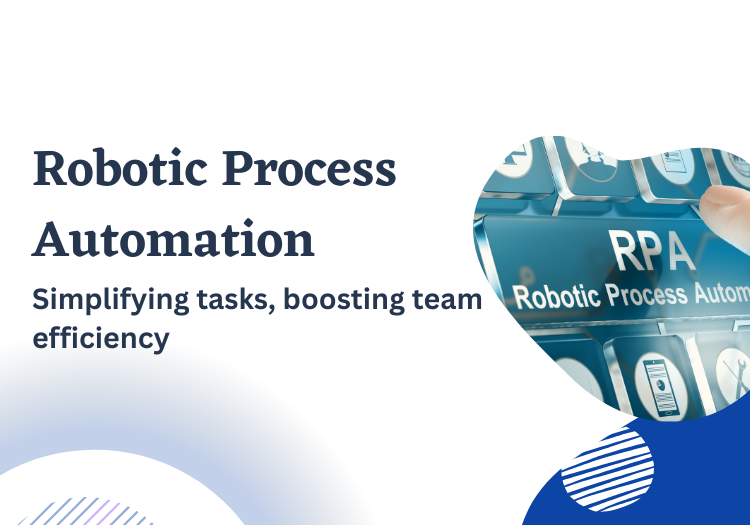


 On this page
On this page

